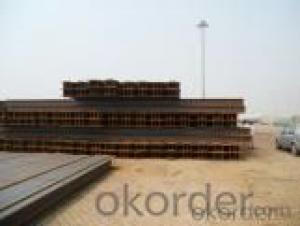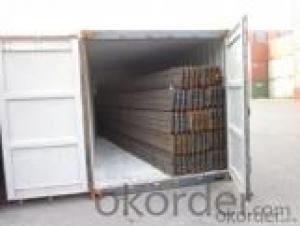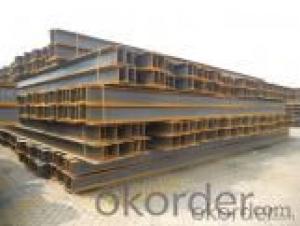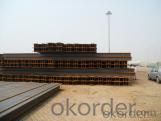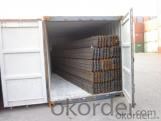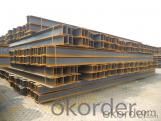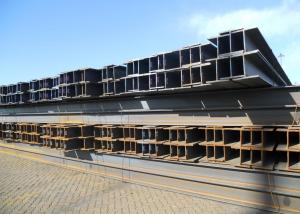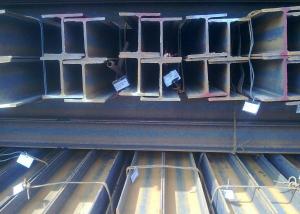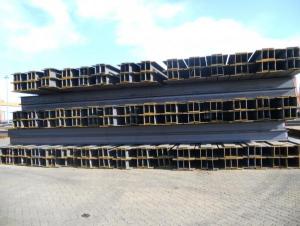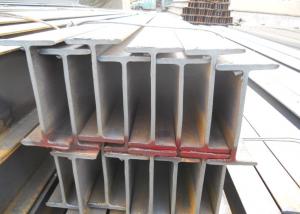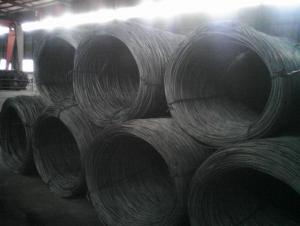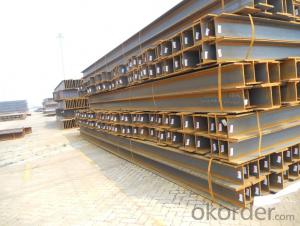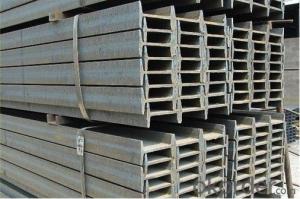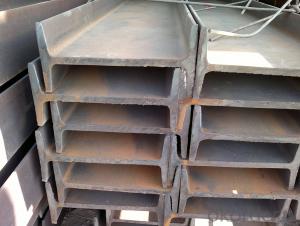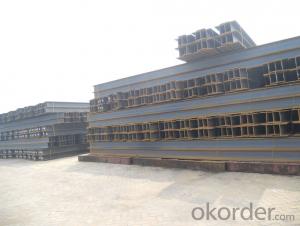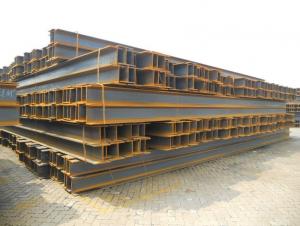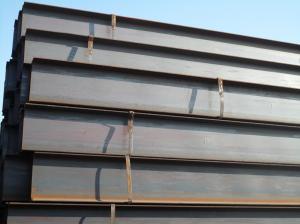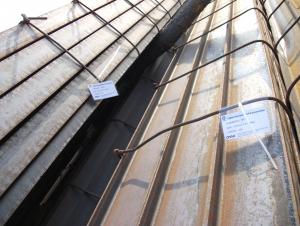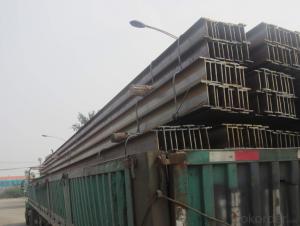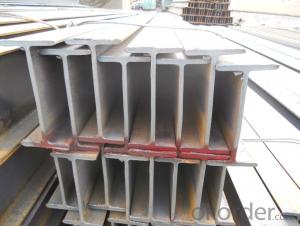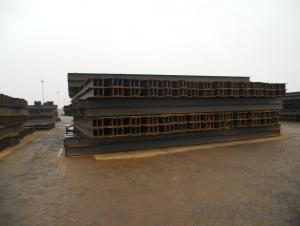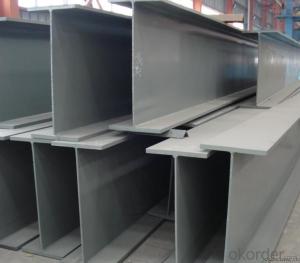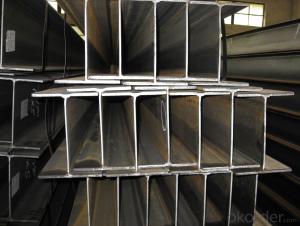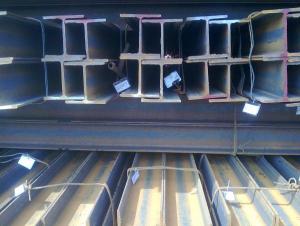Hot Rolled Steel H-beam JIS 3192
- Loading Port:
- China Main Port
- Payment Terms:
- TT or LC
- Min Order Qty:
- -
- Supply Capability:
- -
OKorder Service Pledge
OKorder Financial Service
You Might Also Like
Product Description:
OKorder is offering Hot Rolled Steel H-beam JIS 3192 at great prices with worldwide shipping. Our supplier is a world-class manufacturer of steel, with our products utilized the world over. OKorder annually supplies products to European, North American and Asian markets. We provide quotations within 24 hours of receiving an inquiry and guarantee competitive prices.
Product Applications:
Hot Rolled Steel H-beam JIS 3192 are ideal for structural applications and are widely used in the construction of buildings and bridges, and the manufacturing, petrochemical, and transportation industries.
Product Advantages:
Hot Rolled Steel H-beam JIS 3192 with high quality are durable, strong, and resist corrosion.
Main Product Features:
· Premium quality
· Prompt delivery & seaworthy packing (30 days after receiving deposit)
· Corrosion resistance
· Professional Service
· Competitive pricing
Product Specifications:
1. Standard: JIS 3192
2. Grade: SS400 or Equivalent
3. Length: 10m, 12m as following table
4. Invoicing on theoretical weight or actual weight as customer request
5.Payment: TT or L/C
Size and Mass of H beam:
Size (mm) | Mass (Kg/m) | Size (mm) | Mass (Kg) |
100*100*6.0 | 16.9 | 148*100*6.0 | 20.7 |
125*125*6.5 | 23.6 | 150*150*7.0 | 31.1 |
150*75*5.0 | 14.0 |
1. Packing: it is nude packed in bundles by steel wire rod
2. Bundle weight: not more than 3.5MT for bulk vessel; less than 3 MT for container load
3. Marks:
Color marking: There will be color marking on both end of the bundle for the cargo delivered by bulk vessel. That makes it easily to distinguish at the destination port.
FAQ:
Q1: Why buy Materials & Equipment from OKorder.com?
A1: All products offered byOKorder.com are carefully selected from China's most reliable manufacturing enterprises. Through its ISO certifications, OKorder.com adheres to the highest standards and a commitment to supply chain safety and customer satisfaction.
Q2: Can fit in the containers of 20fts the steel beams of 6M?
A2: No proble, we can put them into the containers in the form sideling.
Q3: What makes stainless steel stainless?
A3: Stainless steel must contain at least 10.5 % chromium. It is this element that reacts with the oxygen in the air to form a complex chrome-oxide surface layer that is invisible but strong enough to prevent further oxygen from "staining" (rusting) the surface. Higher levels of chromium and the addition of other alloying elements such as nickel and molybdenum enhance this surface layer and improve the corrosion resistance of the stainless material.
Images:

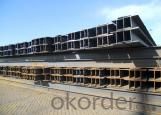
- Q: How do steel H-beams contribute to the overall functionality of a building?
- Steel H-beams contribute significantly to the overall functionality of a building by providing structural support and stability. These beams are designed to withstand heavy loads and distribute weight evenly, allowing for larger open spaces and flexible floor plans. They also enhance the building's resistance to lateral forces such as wind and earthquakes, ensuring its safety and durability. Additionally, H-beams facilitate efficient construction as they can be easily fabricated and interconnected, saving time and costs.
- Q: Are steel H-beams suitable for structures with large spans?
- Yes, steel H-beams are suitable for structures with large spans. They are known for their high strength-to-weight ratio and ability to withstand heavy loads, making them an ideal choice for long-span structures such as bridges, industrial buildings, and large-scale infrastructure projects. The H-shape of the beam provides excellent structural support and stability, allowing for greater spans without compromising structural integrity.
- Q: Can steel H-beams be customized based on specific project requirements?
- Indeed, it is possible to customize steel H-beams according to the specific requirements of a project. Due to their strength and versatility, H-beams are frequently utilized in construction ventures. They can be produced in diverse sizes, lengths, and dimensions to fulfill the precise necessities of a project. Moreover, the steel composition and thickness can also be tailored to guarantee the desired strength and durability. By partnering with a trustworthy steel manufacturer or supplier, project designers and engineers can collaborate to personalize H-beams based on the project's specific requirements, thus ensuring an ideal and effective structural solution.
- Q: What are the different finishes available for Steel H-Beams, such as galvanized or painted?
- Steel H-Beams come in a variety of finishes, including galvanized and painted options. Galvanized finishes involve coating the steel beam with zinc to prevent corrosion and rust. This makes them ideal for outdoor or high-moisture environments, such as coastal construction projects. Painted finishes, on the other hand, add a decorative touch and act as a protective barrier against rust and corrosion. They can be customized to match specific aesthetic requirements or stand out for safety purposes. Another option is powder coating, which involves applying a dry powder to the steel beam and curing it under heat to create a durable finish resistant to chipping, scratching, and fading. The choice of finish depends on the application and environmental factors. Galvanized finishes are suitable for outdoor or high-moisture environments, painted finishes are versatile and customizable, and powder coating offers durability and attractiveness. Consider the specific needs of your project when selecting the appropriate finish for Steel H-Beams.
- Q: How do steel H-beams perform in heavy snow loads?
- Steel H-beams perform exceptionally well in heavy snow loads due to their structural strength and durability. The H-shape design of the beam provides excellent load-bearing capabilities, allowing it to withstand the weight of accumulated snow without deformation or failure. Additionally, steel is known for its resistance to extreme weather conditions, including snow and ice, making H-beams a reliable choice for structures in snowy areas.
- Q: What are the different methods of testing the quality of steel H-beams?
- There are several methods used to test the quality of steel H-beams, including visual inspection, dimensional measurements, mechanical testing, and non-destructive testing. Visual inspection involves checking for any surface defects, such as cracks, pits, or uneven surfaces. Dimensional measurements ensure that the H-beam meets the specified size and shape requirements. Mechanical testing involves subjecting the H-beam to various load conditions to assess its strength, ductility, and other mechanical properties. Non-destructive testing methods, such as ultrasonic testing, magnetic particle inspection, and radiographic testing, are used to detect internal defects or discontinuities without causing damage to the H-beam. These testing methods help ensure the quality and reliability of steel H-beams for various structural applications.
- Q: Can steel H-beams be used in cold storage facilities?
- Yes, steel H-beams can be used in cold storage facilities. Steel H-beams are commonly used in construction due to their strength and durability, making them suitable for various applications including cold storage facilities. The H shape of these beams provides excellent load-bearing capabilities, allowing them to support heavy loads such as insulation panels and refrigeration equipment. Additionally, steel is highly resistant to temperature fluctuations and can withstand the low temperatures typically found in cold storage facilities without compromising its structural integrity. Therefore, steel H-beams are a suitable choice for construction in cold storage facilities.
- Q: How do steel H-beams perform in structures with large spans and cantilevers?
- Steel H-beams are highly effective in structures with large spans and cantilevers. Due to their inherent strength and stiffness, they provide excellent support and load-bearing capacity, making them suitable for withstanding heavy loads and long spans. The H-beam's shape allows for efficient distribution of forces, ensuring stability and minimizing deflection. Additionally, steel H-beams have a high resistance to bending, resulting in reliable performance and structural integrity even in challenging conditions.
- Q: Can steel H-beams be used in railway overpasses?
- Yes, steel H-beams can be used in railway overpasses. They are commonly used in the construction of railway bridges and overpasses due to their high load-bearing capacity and structural strength.
- Q: What is the height of the four fillet welds in H steel submerged arc welding, such as H600*300*6*12?
- The plate thickness is 6 and 12 respectively, and the fillet weld value is the same as the thickness of the thin plate (when the design does not require)
Send your message to us
Hot Rolled Steel H-beam JIS 3192
- Loading Port:
- China Main Port
- Payment Terms:
- TT or LC
- Min Order Qty:
- -
- Supply Capability:
- -
OKorder Service Pledge
OKorder Financial Service
Similar products
Hot products
Hot Searches
Related keywords
